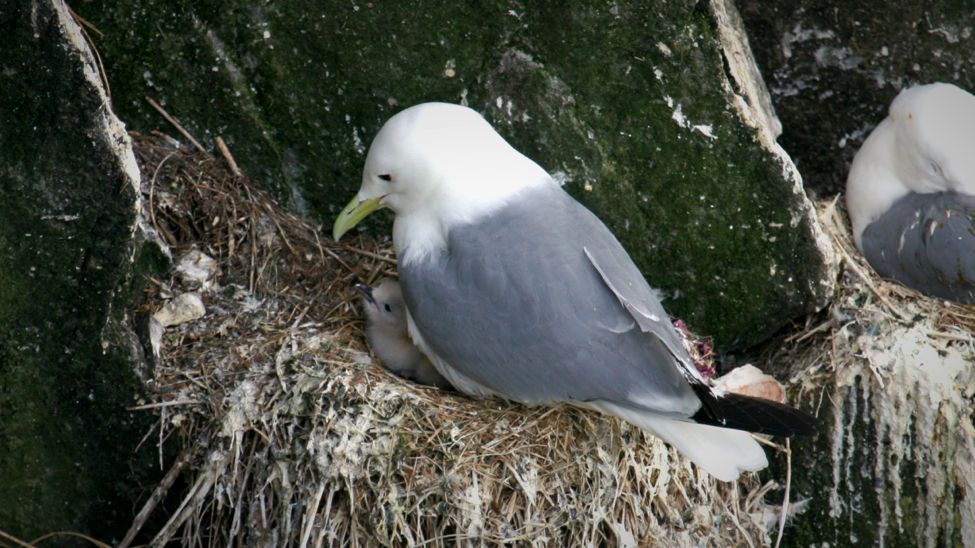The thousands of walruses summering along the beaches of Round Island have made quite a splash this season, but Ben Histand of Alaska Fish and Game and manager of the remote island will attest that there’s more to Round Island than those blubbery guys.
“In addition to watching and counting walruses, staff at Round Island monitor the nesting success of several species of seabirds. Just now I got to see my first black-legged kittiwake chick of the summer! See the photo above.
We’ve been watching 50 kittiwake nests for about a month now. So far, very few of the eggs in those nests have been lost. However, once they’ve hatched, kittiwake chicks take an average of 43 days to fledge – so there’s still plenty of time when they might be eaten by a raven or a fox, or blown off the cliff by a storm. Their parents will go to great lengths to keep them fed and protected (males and females take turns on the nest).
As a species, black-legged kittiwakes are widespread and numerous: their worldwide population is in the tens of millions. However, their numbers can fluctuate significantly, depending on factors such as ocean temperature and the abundance of the fish and invertebrates they eat. They’re one of several species of seabird whose well-being is used as an indicator of the overall health of ocean ecosystems, and the monitoring we do at Round Island is part of this effort.
As you might be able to tell when you see them on our cameras, kittiwakes are graceful and agile in flight. They’re fun birds to watch, and to sit by their colonies on a sunny day, trying to catch a glimpse of an egg or newly hatched chick, is pretty pleasant work.”



